AMLAN 10 Sample Reports
|
Purchase Order - Inventory Reports
The Inventory Reports are especially designed to help you monitor the various transactions involving the inventory items. These reports provide a wide variety of inventory item information including a list of inventory items, quantities on hand, costs, adjustments, reorder information, and much more. Each of the Inventory Reports is especially designed to provide several options so you can narrow down data to the specific information needed. Read the information below to get a closer look at each of the Inventory Reports available in AccountMate. Inventory Item Listing
The Inventory Item Listing provides basic information about the inventory items. This report shows the item numbers and descriptions, class, product line, type, units of measurement, status, cost method, standard cost per unit, last sale price, among other information. This report helps you monitor the inventory items. It also serves as a reference when creating new inventory item records. You can filter the report data to include only the inventory items that are designated for use in invoices and sales orders, only those that are designated for use in purchase orders, only those that are designated for use in work orders, or all inventory items that meet the specified criteria. You can further filter the report to include only the active items, only the inactive items, or both. You also have the option to display in the report the unit prices, inventory item remarks, and/or one or both the units of measurement used for sales and purchase transactions. 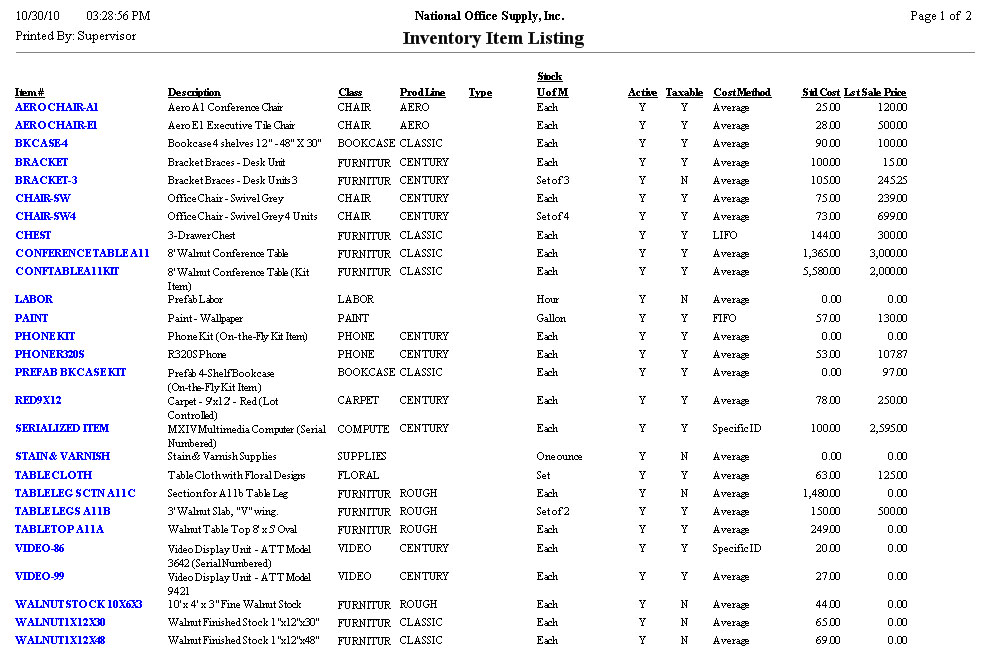
Click image to enlarge/reduce view Warehouse Quantity Listing
The Warehouse Quantity Listing provides information on inventory item quantities in each warehouse that your company maintains. This report is useful for determining which inventory items are stored in each warehouse, among other details. You can use this report as a tool for inventory management, particularly for determining each inventory item's current volume level, availability, and movement within a specific warehouse. You have the option to show the inventory itemsí average and total costs as well as to show the unit prices and sales value. You also have the option to show the inventory itemsí serial, lot, and kit numbers, if applicable. You can elect to exclude from the report the inventory items with zero on-hand quantities and those with zero total cost. You can filter the report to include only the items that are designated for use in invoices/sales orders, only those designated for use in purchase orders, only those designated for use in work orders, or all items that meet the specified criteria. You can further filter the report to include only the active items, only the inactive items, or both. 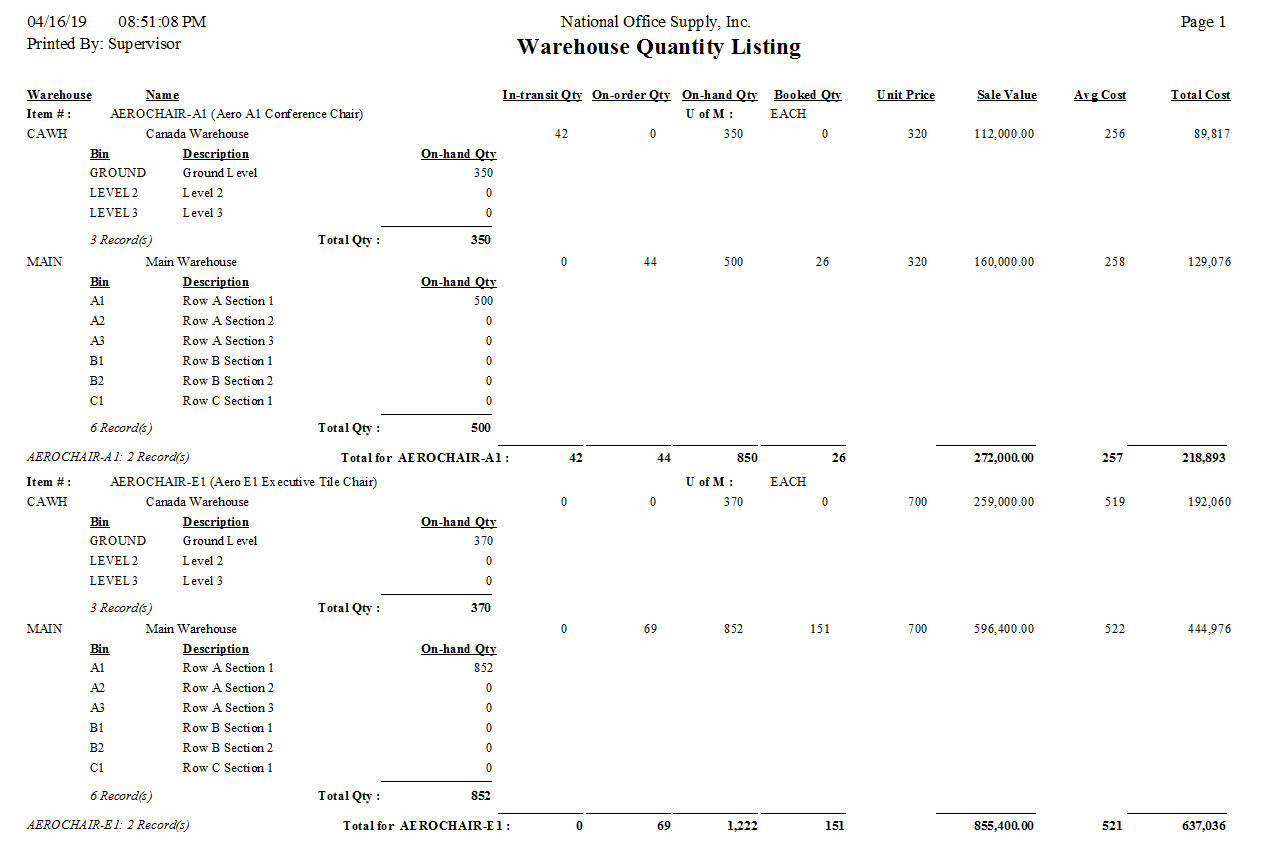
Click image to enlarge/reduce view Inventory Cost Listing
The Inventory Cost Listing provides the inventory items' cost related information including the unit cost, cost method, inventory cost, standard cost, and return cost. This report is helpful in comparing each inventory item's various costs. You can filter this report to include only the active items, only the inactive items, or both. You can further filter this report to include only the items designated for use in invoices/sales orders, only those designated for use in purchase orders, only those designated for use in work orders, or all items that meet the specified criteria. 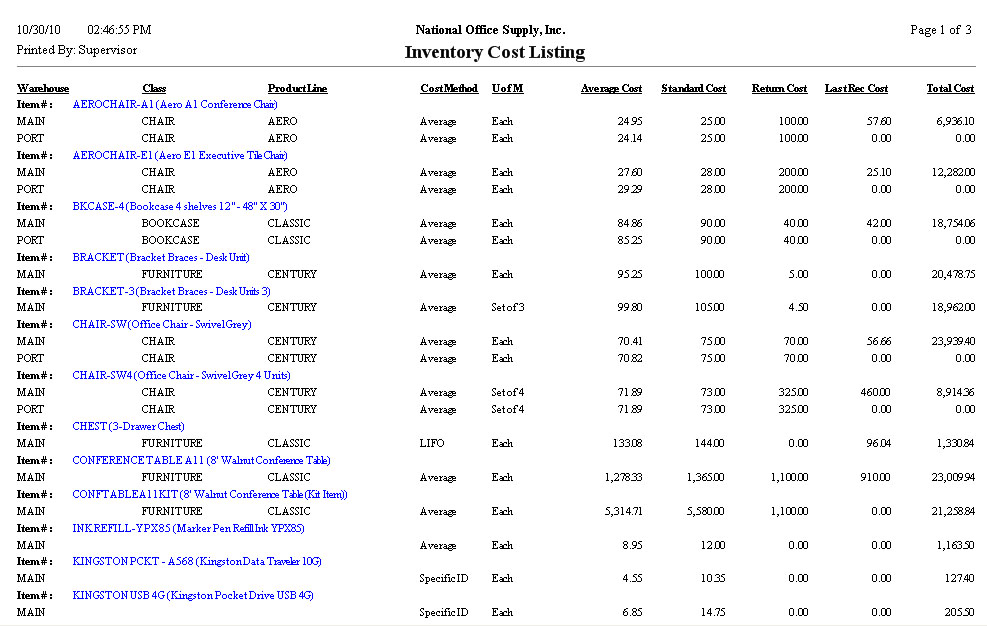
Click image to enlarge/reduce view Inventory Adjustment Report
Inventory adjustments are changes in inventory item quantities and costs that are not attributable to sales or purchases. The Inventory Adjustment Report provides information on the details of inventory adjustments recorded using the Inventory Adjustment and Update Physical Count functions. These pieces of information include the warehouse and bin, item numbers and descriptions, adjustment dates and remarks, units of measurement, adjustment quantities, unit costs, and adjustment values. This report is useful for monitoring the inventory adjustments made during a specific period and for verifying the authenticity of the adjustment transactions that affect the inventory quantities and balance. You can also select to include in this report the inventory itemsí serial numbers, lot numbers and kit numbers, if there is any. 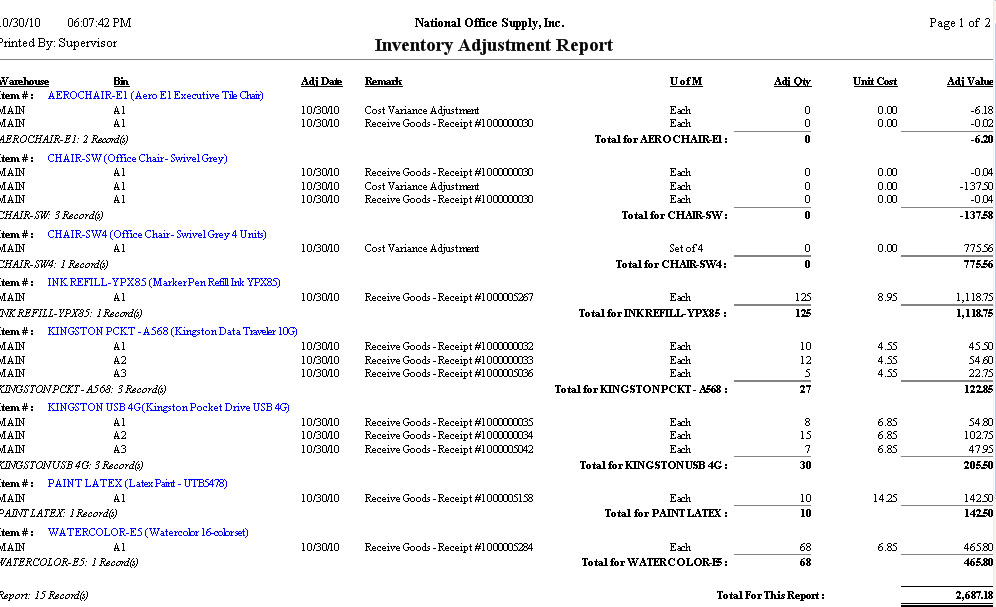
Click image to enlarge/reduce view Inventory Reorder Report
The Inventory Reorder Report provides information on inventory items that need to be reordered from vendors. This report gives you the specific inventory items that are out of stock or whose on-hand quantities reach the reorder points. This report is useful in maintaining optimum inventory levels. It can also be used as a reference when re-ordering stocks. You can filter this report to include only the items with quantity levels that are equal to or less than their respective reorder points, only those items that have zero quantities on hand, or all items that meet the specified criteria in the report interface. Checkboxes are available for you to mark if you want the report to include the items that are designated for use in invoices/sales orders, only those designated for use in purchase orders, only those designated for use in work orders, or all items that meet the specified criteria. You can further filter the report to include only the active items, only the inactive items, or both. 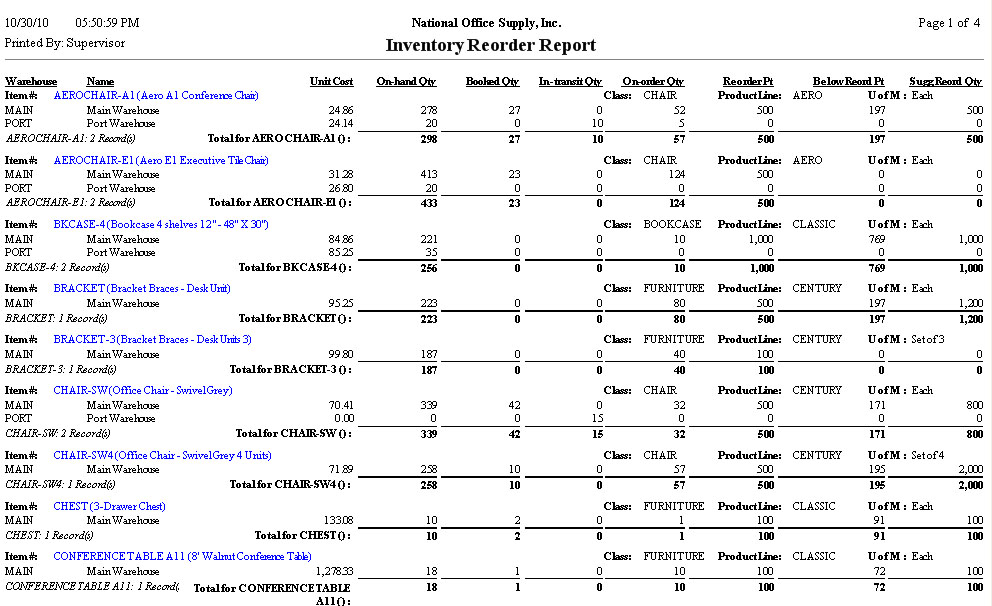
Click image to enlarge/reduce view |



